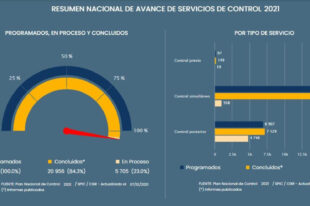Banking Oversight: Developing a Useful SAI Framework

[cmsmasters_row data_padding_bottom_mobile_v=”0″ data_padding_top_mobile_v=”0″ data_padding_bottom_mobile_h=”0″ data_padding_top_mobile_h=”0″ data_padding_bottom_tablet=”0″ data_padding_top_tablet=”0″ data_padding_bottom_laptop=”0″ data_padding_top_laptop=”0″ data_padding_bottom=”50″ data_padding_top=”0″ data_bg_parallax_ratio=”0.5″ data_bg_size=”cover” data_bg_attachment=”scroll” data_bg_repeat=”no-repeat” data_bg_position=”top center” data_color=”default” data_bot_style=”default” data_top_style=”default” data_padding_right=”3″ data_padding_left=”3″ data_width=”boxed” data_shortcode_id=”f8smas9cgh”][cmsmasters_column data_width=”1/3″ data_animation_delay=”0″ data_border_style=”default” data_bg_size=”cover” data_bg_attachment=”scroll” data_bg_repeat=”no-repeat” data_bg_position=”top center” data_shortcode_id=”xwmtipq60d”][cmsmasters_image shortcode_id=”x5nqpwf6n” align=”center” target=”true” animation_delay=”0″]18984|http://intosaijournal.org/wp-content/uploads/2019/04/INTOSAI-Journal-Spring-2019_24-232×300.jpg|medium[/cmsmasters_image][/cmsmasters_column][cmsmasters_column data_width=”1/3″ data_shortcode_id=”3mtgtkmd09″][cmsmasters_image shortcode_id=”8c54onsbd” align=”center” target=”true” animation_delay=”0″]18985|http://intosaijournal.org/wp-content/uploads/2019/04/INTOSAI-Journal-Spring-2019_25-232×300.jpg|medium[/cmsmasters_image][/cmsmasters_column][cmsmasters_column data_width=”1/3″ data_shortcode_id=”77pgln7dw”][cmsmasters_image shortcode_id=”ric3ft2req” align=”center” target=”true” animation_delay=”0″]18986|http://intosaijournal.org/wp-content/uploads/2019/04/INTOSAI-Journal-Spring-2019_26-1-232×300.jpg|medium[/cmsmasters_image][/cmsmasters_column][/cmsmasters_row][cmsmasters_row data_padding_bottom_mobile_v=”0″ data_padding_top_mobile_v=”0″ data_padding_bottom_mobile_h=”0″ data_padding_top_mobile_h=”0″ data_padding_bottom_tablet=”0″ data_padding_top_tablet=”0″ data_padding_bottom_laptop=”0″ data_padding_top_laptop=”0″ data_padding_bottom=”50″ data_padding_top=”0″ data_bg_parallax_ratio=”0.5″ data_bg_size=”cover” data_bg_attachment=”scroll” data_bg_repeat=”no-repeat” data_bg_position=”top center” data_color=”default” data_bot_style=”default” data_top_style=”default” data_padding_right=”3″ data_padding_left=”3″ data_width=”boxed” data_shortcode_id=”9arapakvzk”][cmsmasters_column data_width=”1/1″ data_animation_delay=”0″ data_border_style=”default” data_bg_size=”cover” data_bg_attachment=”scroll” data_bg_repeat=”no-repeat” data_bg_position=”top center” data_shortcode_id=”376ohzv44″][cmsmasters_notice shortcode_id=”fk7oq1u6is” type=”cmsmasters_notice_download” animation=”fadeIn” animation_delay=”2000″]
Click here to download full article (pdf)
[/cmsmasters_notice][/cmsmasters_column][/cmsmasters_row][cmsmasters_row][cmsmasters_column data_width=”1/1″][cmsmasters_text]
by Ghorban Eskandari, Senior Auditor, Supreme Audit Court of Iran
Corruption and Fraud—The Issue
Corruption and financial fraud are very challenging issues within the banking system that can inflict irreparable harm to a nation’s development and growth. The potential widespread and destructive effects can reduce social capital and increase poverty, social injustice and class divisions.
The banking system will continue to face these issues far into the future until successful counteraction initiatives are implemented.
Basic banking oversight concepts and principles have been expressed in the Basel III framework, an internationally agreed upon set of measures created in response to the financial crisis of 2007-2009 that aim to strengthen bank regulation, supervision and risk management.
A multifaceted issue, oversight in the banking sector requires the cooperation of various regulatory bodies, each performing tasks according to individual organization mechanisms and objectives.
While these regulatory agencies and various monitoring structures are in place, the world economy remains exposed to financial abuse, and evidence points to inefficient banking systems and weak regulatory procedures and guidance.
A Study to Determine a Successful Framework
This article discusses appropriate frameworks through a study, “Surveillance Authority of Supreme Audit Institutions (SAIs) in the Banking Sector,” that assessed the status quo and identified potential mechanisms to achieve favorable situations.
Research Methodology. The study used a qualitative approach to identify, analyze and report patterns within the data. An open-ended interview of 21 local experts (selected using the snowball sampling method) was the primary tool to gather data. The research was conducted using a four-phase process:
- Identify goals and identify the status quo;
- Formulate concepts governing regulatory framework design;
- Analyze pathology and problems in the banking field; and
- Gather additional data through expert interviews and reach a consensus on a financial monitoring framework.
Study Findings. Every oversight system requires determining specific objectives and identifying the responsibilities and activities necessary to achieve them. Study results showed that a key challenge for SAIs within the banking sector tends to be unidentified goals, which means associated tasks and responsibilities are also unclear.
Additionally, oversight activities should be updated as changes occur in the environment, since these changes can impact and influence banking oversight on many levels— economically, organizationally, socially, culturally and politically.
The study also identified several factors resulting in, hampering, or completely preventing successful banking sector oversight, including:
- Auditors lacking a comprehensive understanding of bank operations;
- The volume of regulatory bodies;
- Organizational expansion cost reduction measures negatively impacted efficiency and effectiveness; and
- Oversight authorities potentially limited by mandates, available human resources and facilities, and participating in investigations and/or audits having no real purpose (simply justifying existence or creating false needs for expansion).
Study findings, combined with extensive research, resulted in developing an oversight framework (see Figure 1 on following page) that incorporates conditions, concepts, activities and potential consequences attributable to, and affecting, SAI audit work in the banking sector, such as:
- The pivotal phenomenon, or main theme, derived from the study is targeted surveillance (monitoring).
- Causality conditions are events that create situations and issues related to the phenomenon. These conditions, to an extent, also explain how and why individuals and groups engage in this phenomenon.
- To address underlying conditions (internal and external characteristics considered primary challenges to the audit), factors affecting targeted monitoring were identified.
- Mediator conditions are macro and general conditions that influence the effect of causal conditions on the phenomenon under study.
- Strategies are the key activities auditors consider and use.
- Finally, in the context of possible outcomes, expected results, consequences, stemming from strategies and actions were identified.
For more information about the study, research and supervisory framework for SAIs in the banking sector, email the author at ghorbaneskandari@yahoo.com.
[/cmsmasters_text][/cmsmasters_column][/cmsmasters_row]





